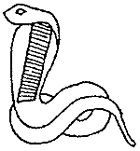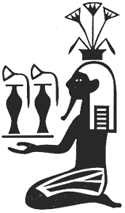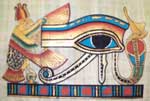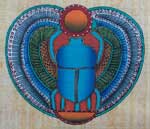
Egyptian Art
by Donna
Garcia
St. John's School
6th grade
Healdsburg, California

St. John's School
6th grade
Healdsburg, California

|
In Egypt, many works or art were discovered in the tombs and temples of Ancient Egypt. Because of their belief in life after death, Egyptians filled their tombs with objects and paintings that reflected everyday life. Scenes of planting, harvesting, processions, warfare, and celebrations make it easy to imagine life 3,500 years ago along the banks of the Nile River. OBJECTIVE:
SUPPLIES:
|
||
 |
|
|
 |
 |
Grade Six Visual Arts Standard used with this Egyptian Art Project:
-
Artistic Perception (1.1, 1.2, 1.3)
-
Creative Expression (2.1, 2.3, 2.4, 2.5)
-
Historical and Cultural Context (3.1, 3.2, 3.3)
- Aesthetic Valuing (4.1, 4.2, 4.3)
